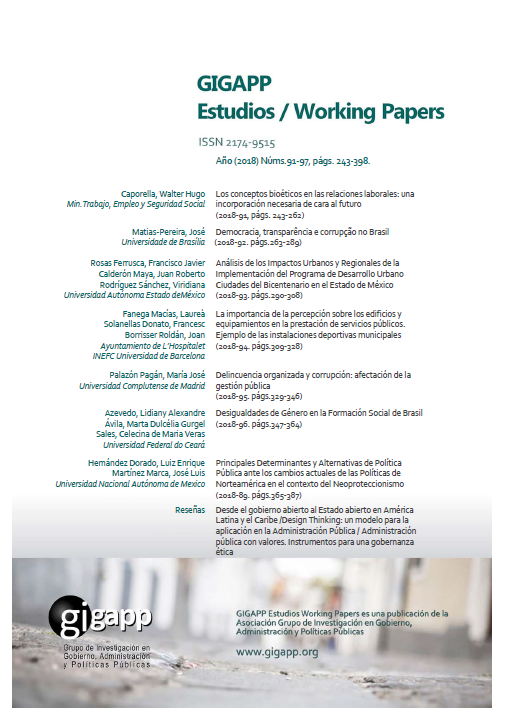Gender Inequalities in Social Formation in Brazil
Abstract
The woman, within the classical history and the works that approach the social, economic and political formation of Brazil, usually appears in the condition of non-subject, emphasizing its natural condition of inferiority and submission. This article aims to reflect on the conditions of origin, permanence and updating of patriarchy, highlighting the spheres of work and political representation. Based on data from official sources, laws and normatization of public policies, we have seen that the domination and exploitation of women far from extinct has been able to update throughout the history of our country, even with the advances that we have achieved in the rights of the women
Downloads
Copyright (c) 2018 Lidiany Alexandre Azevedo, Marta Dulcélia Gurgel Ávila, Celecina de Maria Veras Sales

This work is licensed under a Creative Commons Attribution-NonCommercial-ShareAlike 4.0 International License.
Those authors who have publications with this journal, accept the following terms:
a. Authors will retain their copyrights and guarantee the journal the right of first publication of their work, which will be simultaneously subject to the Creative Commons Attribution-NonCommercial-ShareAlike 4.0 International (CC BY-NC-SA Recognition License). 4.0) that allows third parties to share the work as long as its author and its first publication are indicated in this journal.
Under this open access license, readers (users) can:
- Share — copy and redistribute the material in any medium or format
- Adapt — remix, transform, and build upon the material
Under the following terms:
-
Attribution — Users must give appropriate credit, provide a link to the license, and indicate if changes were made. You may do so in any reasonable manner, but not in any way that suggests the licensor endorses you or your use.
-
NonCommercial — Users may not use the material for commercial purposes.
-
ShareAlike — If remix, transform, or build upon the material, users must distribute your contributions under the same license as the original.
- No additional restrictions — Users may not apply legal terms or technological measures that legally restrict others from doing anything the license permits.
b. Authors may adopt other non-exclusive license agreements for the distribution of the version of the published work (eg: deposit it in an institutional telematic archive or publish it in a monographic volume) provided that the initial publication in this journal is indicated.
c. Authors are allowed and recommended to disseminate their work through the Internet (e.g. in institutional telematic files or on their website) before and during the submission process, which can lead to interesting exchanges and increase citations of the published work. (See The effects of open access).



